Best CHICKEN BREEDS for Meat
by Jennifer Behm – Chicken farmer | Last Updated – 22 March 2021
- Cornish cross – Most popular meat breed
- Jersey Giants – American Purebreds
- Freedom Rangers – The most economical
- Bresse chicken – The tastiest breed
- Orpington – Best dual-purpose
- Buckeye – The best for northern climates
- Brown Leghorn – Great choice for backyard
- Egyptian Fayoumi – The exotic breed
- Turken – Suitable for any climate
- Chantecler – The best overall
- Delaware – Best cross-breed
- Croad Langshan – The smartest and quietest
- Dorking – The tenderest meat
- Kosher king – Great look
- New Hampshire red – Classic dual-purpose
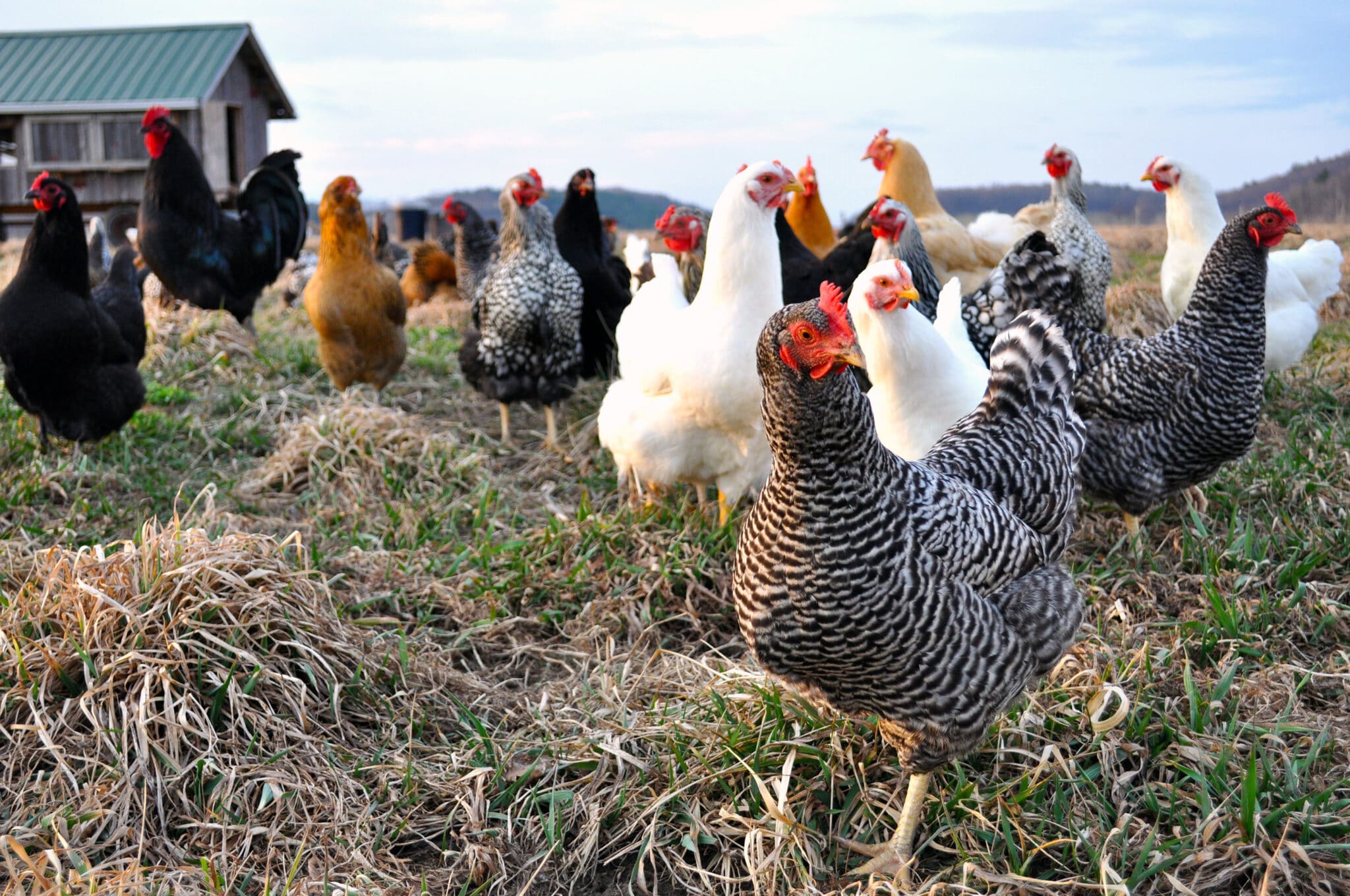
When you are preparing to select the perfect breed of meat chicken for your farm, you will likely have several questions.
The most important details to pay attention to when you are researching your breeds are the approximate weight and the processing time of your chosen chicken breed.
You should also pay attention to other factors that may be important to you, such as whether the breed can lay eggs or if it withstands certain weather conditions better than others.
Some chicken farmers will also advocate for raising heritage breeds. Heritage breeds are defined by the American Poultry Association. These birds are generally slow-growing but have long, productive outdoor life spans.
They are also naturally mating. While heritage breeds offer many benefits, they can also be more expensive to raise. So you need to consider whether this is a factor that matters to you.
Read on:
Ready to get started? Here is a list of the 15 best meat chickens you can raise.
| Chicken breed | Processing time | Approximate weight | Eggs per year |
|---|---|---|---|
| Cornish cross | 6 weeks | 12 pounds | Not go broody |
| Jersey Giants | 16 to 21 weeks | 13 pounds | 150-200 |
| Freedom Rangers | 9 to 11 weeks | 6 pounds | 150-200 |
| Bresse | 16 to 20 weeks | 7 pounds | 250 eggs |
| Orpington | 18 to 24 weeks | 10 pounds | 200 eggs |
| Buckeye | 16 to 21 weeks | 9 pounds | 175 – 240 |
| Brown Leghorn | 16 to 21 weeks | 6 pounds | 300+ eggs |
| Egyptian Fayoumi | 14 to 18 weeks | 5 pounds | 150 small eggs |
| Turken | 10 to 15 weeks | 6 to 9 pounds | 120-150 |
| Chantecler | 11 to 16 weeks | 9 pounds | 200 eggs |
| Deleware | 12 weeks | 8.5 pounds | 200 to 280 |
| Croad Langshan | 14 to 18 weeks | 9 pounds | 140-150 |
| Dorking | 16 weeks | 9 pounds | 150 to 200 |
| Kosher King | 12 weeks | 5 pounds | Not applicable |
| New Hampshire red | 8 to 10 weeks | 8.5 pounds | 200-250 |
Read More from prestigequeen.com :
The 15 Best Meat Chickens
Cornish cross
1. Cornish cross, approximately 12, found processing time four to six weeks, Cornish chickens and some of the most popular meat birds you can raise, largely because they are bred for commercial meat production. These birds grow rapidly, reaching about 12 pounds in just six weeks. They have great-tasting meat with large thighs, legs, and breasts.
They also produce a nice fat cat that provides for a fantastic roast. Cornish crosswords are known in particular for having a ton of breast meat. They do not have a lot of muscle either.
This is the type of chicken you are probably eating when you buy your meat at the grocery store.
Unfortunately, Cornish crosswords eat a lot in order to keep up with their rapid growth up to 50 pounds every few days in an average-sized flock. They also need to budget right at the age of maturity, or they will grow so large that they can suffer from health problems like broken legs or heart malfunctions.
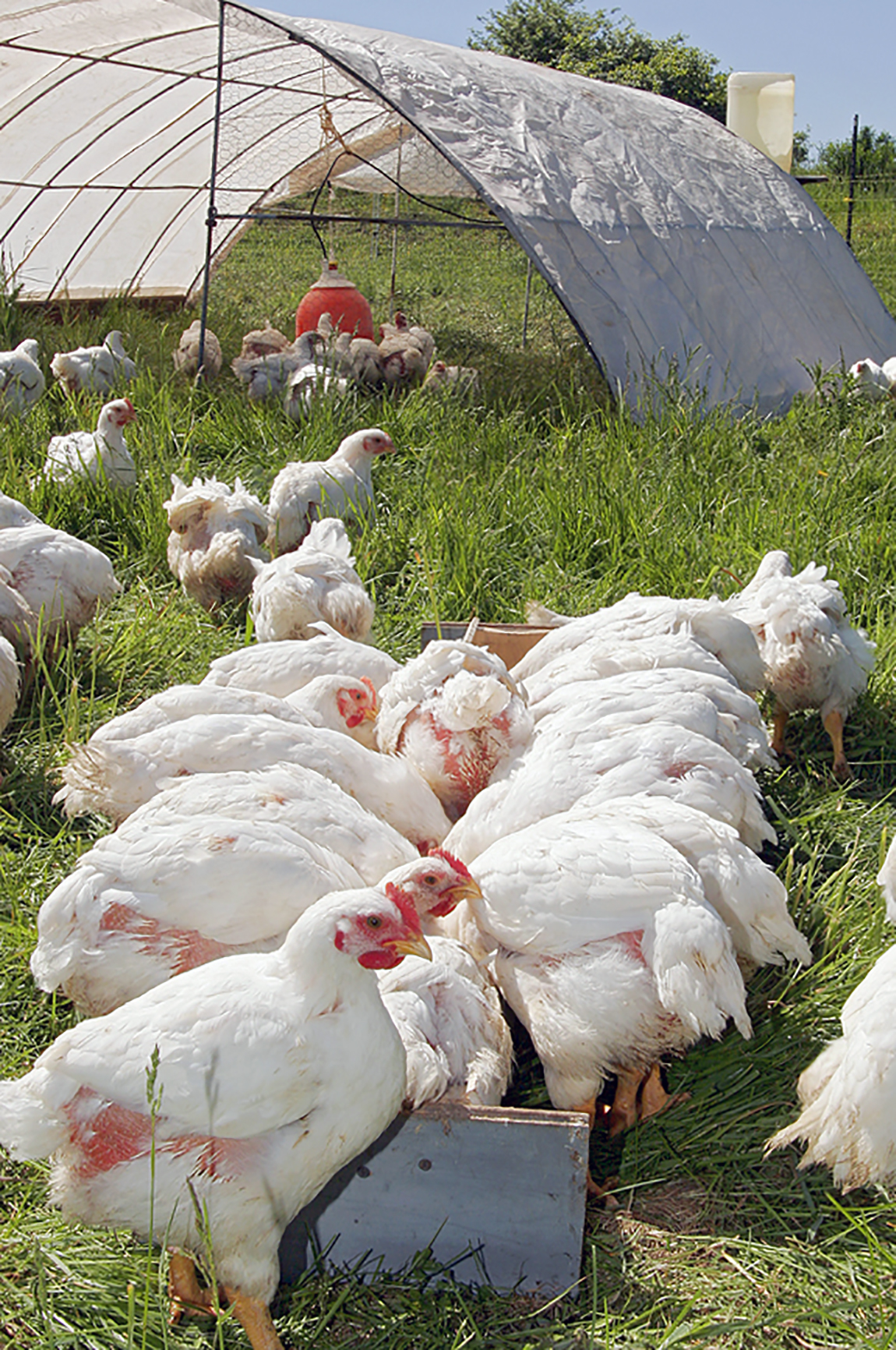
Cornish crops, chickens will not go broody and you can’t really breed them using an incubator either, meaning you will have to purchase chicks every year.
Jersey Giants
2. Jersey Giants, approximate weight, 13 pounds processing time, 16 to 21 weeks. The Jersey Giant is another popular commercial bred originally in the United States as a potential replacement for the turkey.
These birds are purebred, meaning you can successfully breed them on your farm. And while they grow at a relatively slow pace, they produce quite a lot of meat.
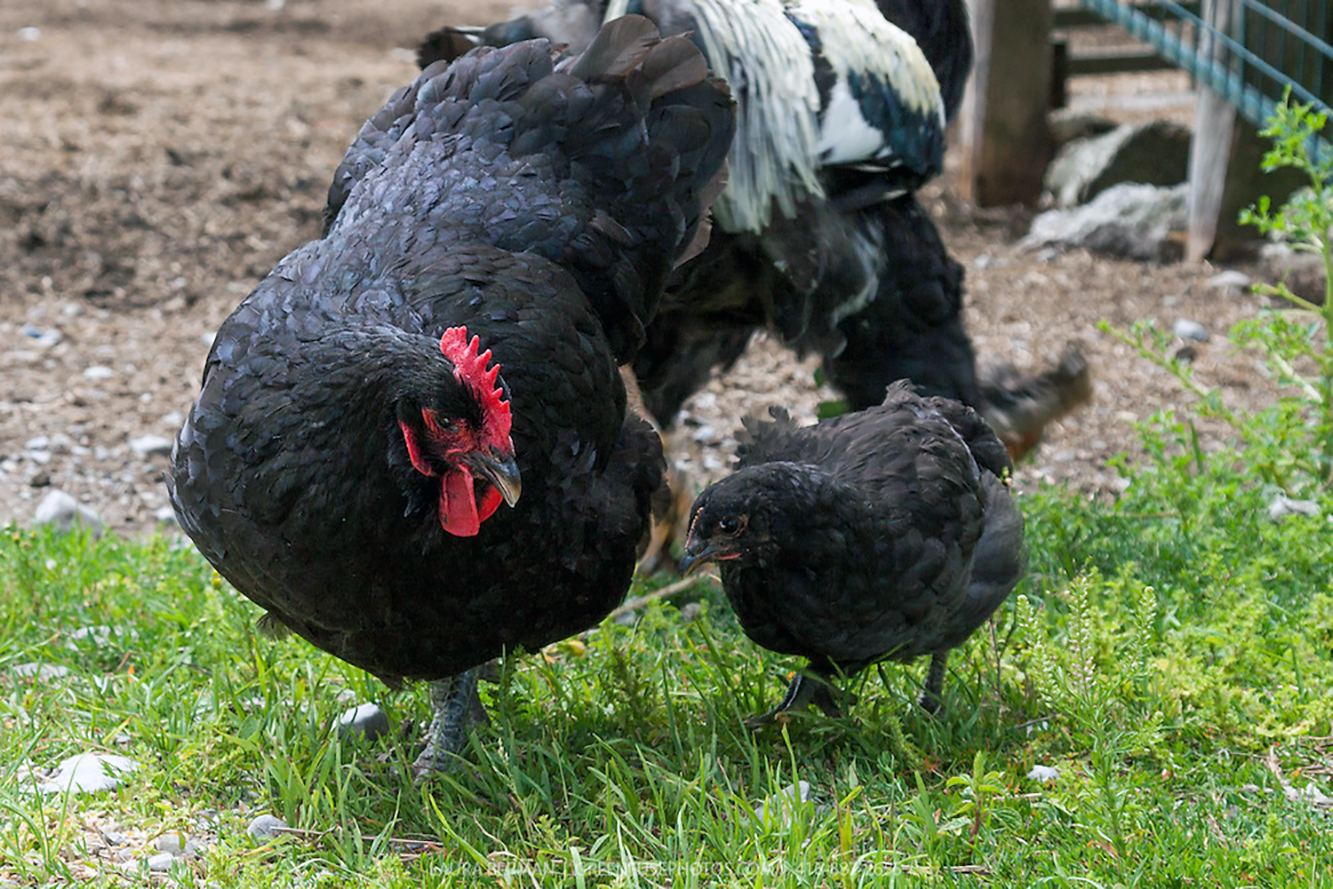
These chickens aren’t raised as often in the commercial world as the Cornish crosses, mostly because they have a very slow feed conversion rate, although they will end up growing larger. It will take that much more time to do so.
That said, Jersey Giants aren’t prone to nearly as many health issues as the Cornish crops chickens, and they also lay eggs. This gives you something to look forward to in addition to meat.
Freedom Rangers
3. Freedom Rangers, approximate weight, six pounds processing time, nine to 11 weeks, if the name is not enough to convince you that the Freedom Ranger is one of the coolest birds to raise these statistics.
This bird is ready for slaughter in as little as nine weeks, also known as the Red Ranger. This bird has yellow, fat, and skin and lays brown eggs if you want to keep some birds around in the future.
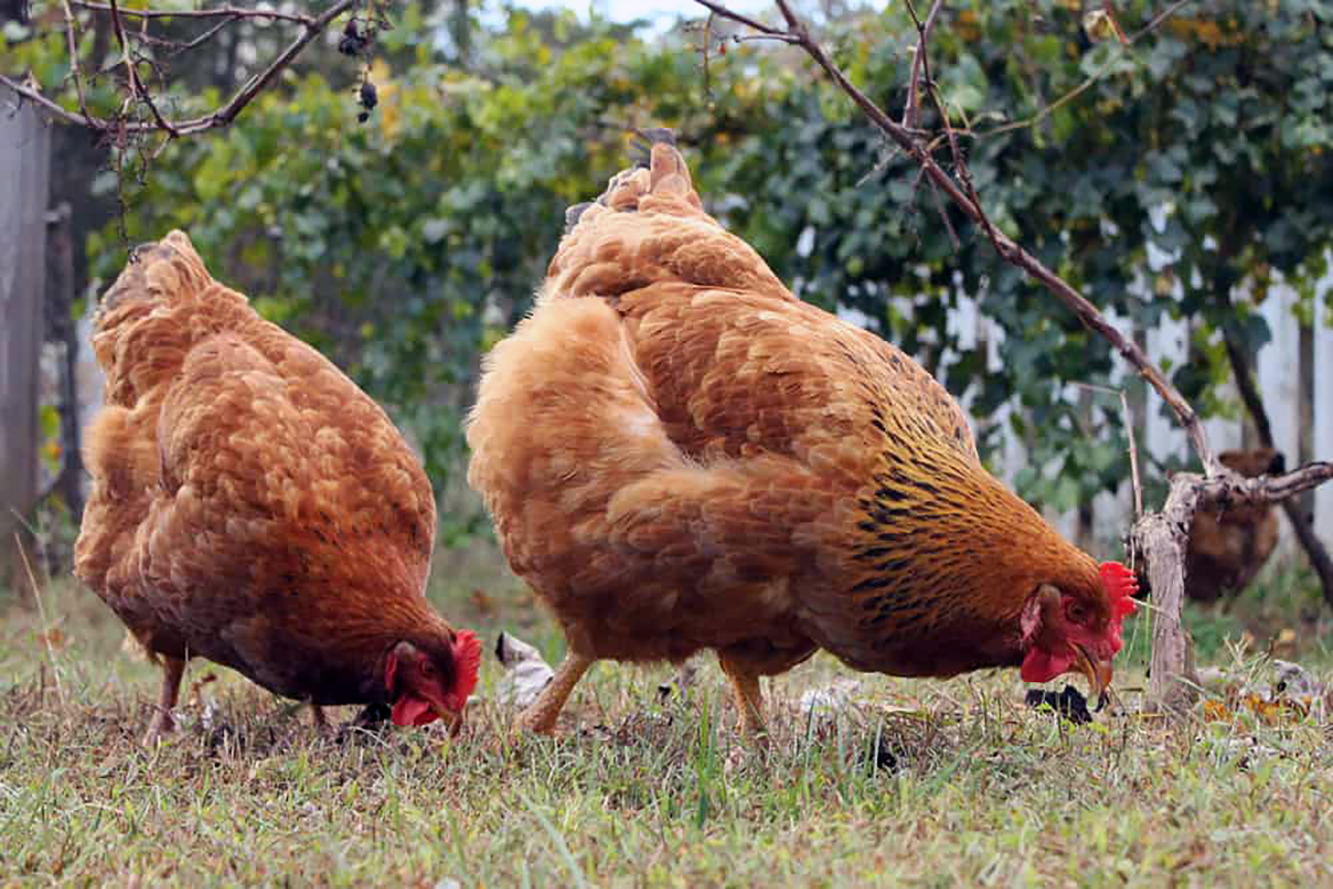
Freedom Rangers are a favorite for organic farmers, bred specifically for the pesticide-free meat market and designed to be raised on pasture.
They can be fed low protein feeds and are much better at fending for themselves than aconitia crosses. They can easily survive off bugs and grass and produce great-tasting meat. Unfortunately, while they produce great tasting meat, they don’t produce quite as much of it.
They are easier to raise but have a smaller growth pattern, with the Roosters only reaching about six pounds on average.
Bresse
4. Bresse, approximate weight, seven pounds processing time, 16 to 20 weeks, breast chickens are attracted by birds that are also known for meat production with bright blue feet.
These birds run on the more expensive side, however, because you can successfully hatch the eggs of this chicken species. You can rapidly recoup those expenses. Over the years, some chicken keepers and culinary experts will argue that the breast meat bird is the most delicious tasting chicken in the world, offering superior texture and flavor.
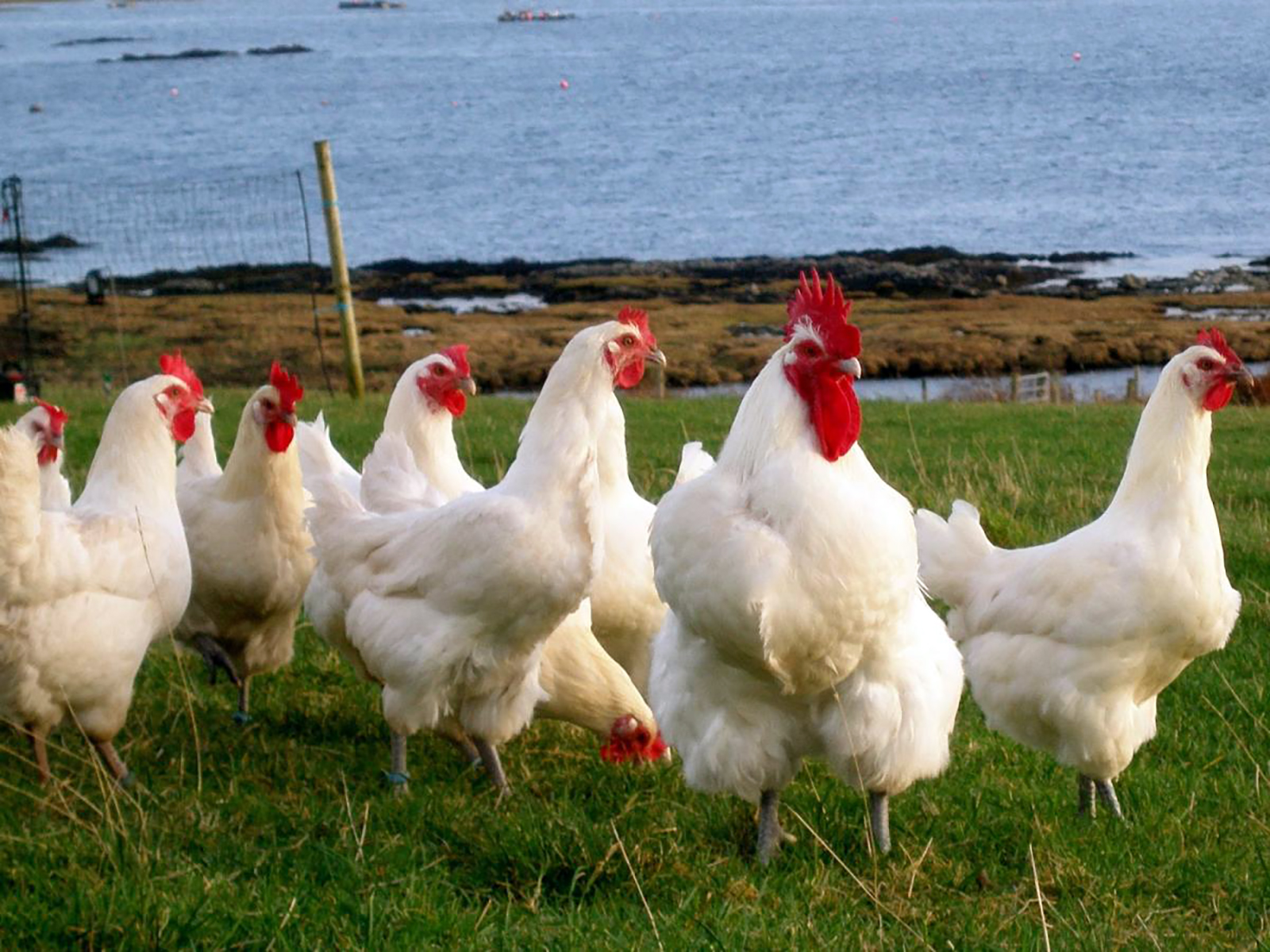
These birds are also easy to raise, offering a docile personality and a peaceful overall demeanor. You can find this chicken in shades of white and black.
Orpington
5/ Orpington, approximately 10 pounds processing time, 18 to 24 weeks, another popular chicken breed is the often a heavy breed. Males of this breed can grow as large as 10 pounds of ringtones, dual-purpose birds, meaning they can be raised for meat as well as four eggs while they grow at a slightly slower rate.
They are excellent players, producing up to 200 Xperia Orpington Zardoz docile meat birds and can be found in several sheds. You can find Orpington in black, white, blue above Shade’s, a heritage chicken breed.
Many people enjoy raising Orpington out of tradition alone. These birds also do quite well when allowed to forage, and they don’t need to be fed ridiculously high protein feeds.
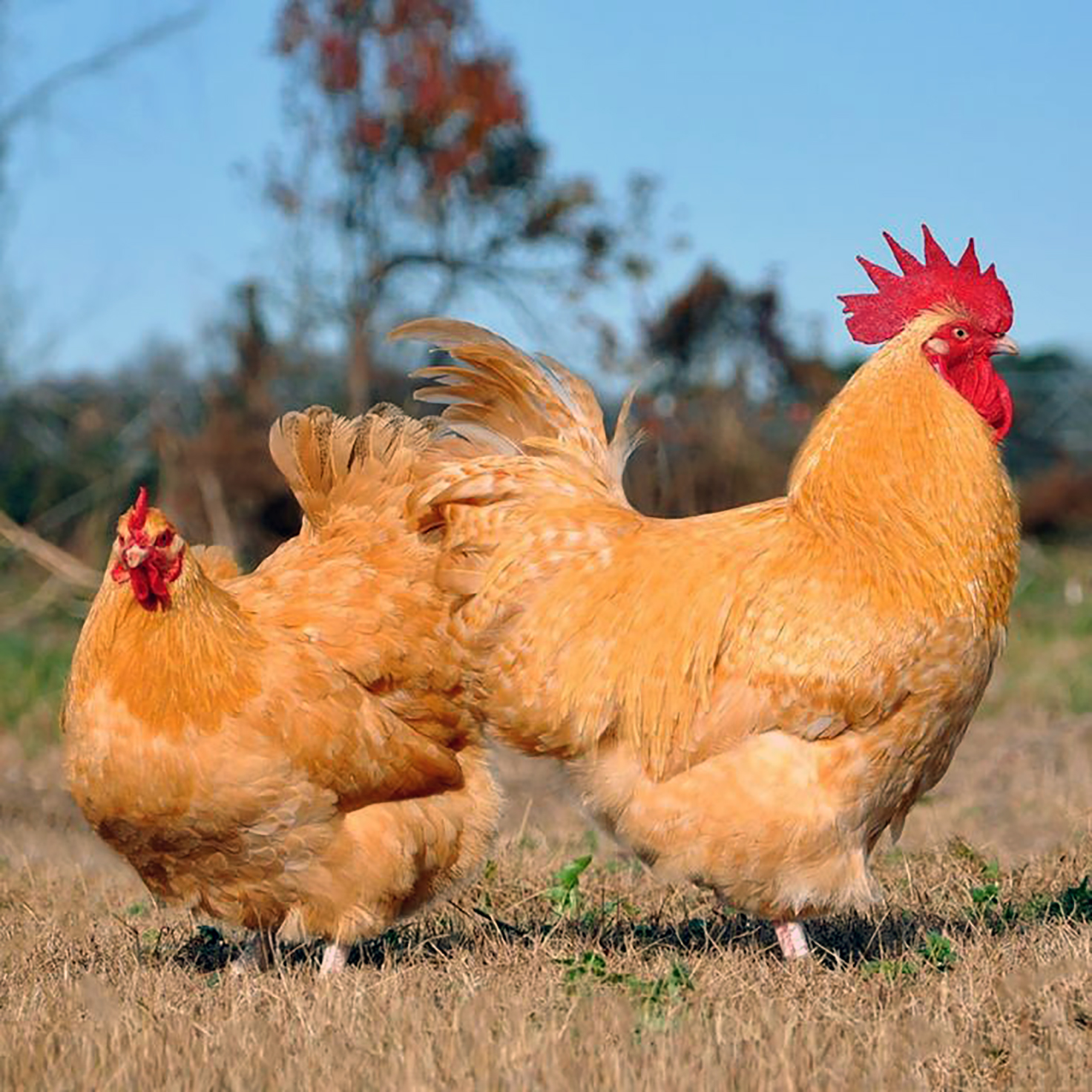
Buckeye
6. Buckeye – Approximate weight, nine pounds. Processing time, 16 to 21 weeks Buckeye chickens are designed for cold weather and can withstand just about any kind of swinging temperature. They are resistant to disease and are ideal for people who live in northern climates. They have a consistent breathing pattern.
And while they can be somewhat aggressive toward other animals, they are a fantastic dual-purpose breed Buxley around 200 Xperia and are ready for butchering at about 16 weeks of age. Sporting a luxurious mahogany body of this breed is one you got to consider if you’re in the market for a productive, dual-purpose chicken that produces lots of tasty meat.
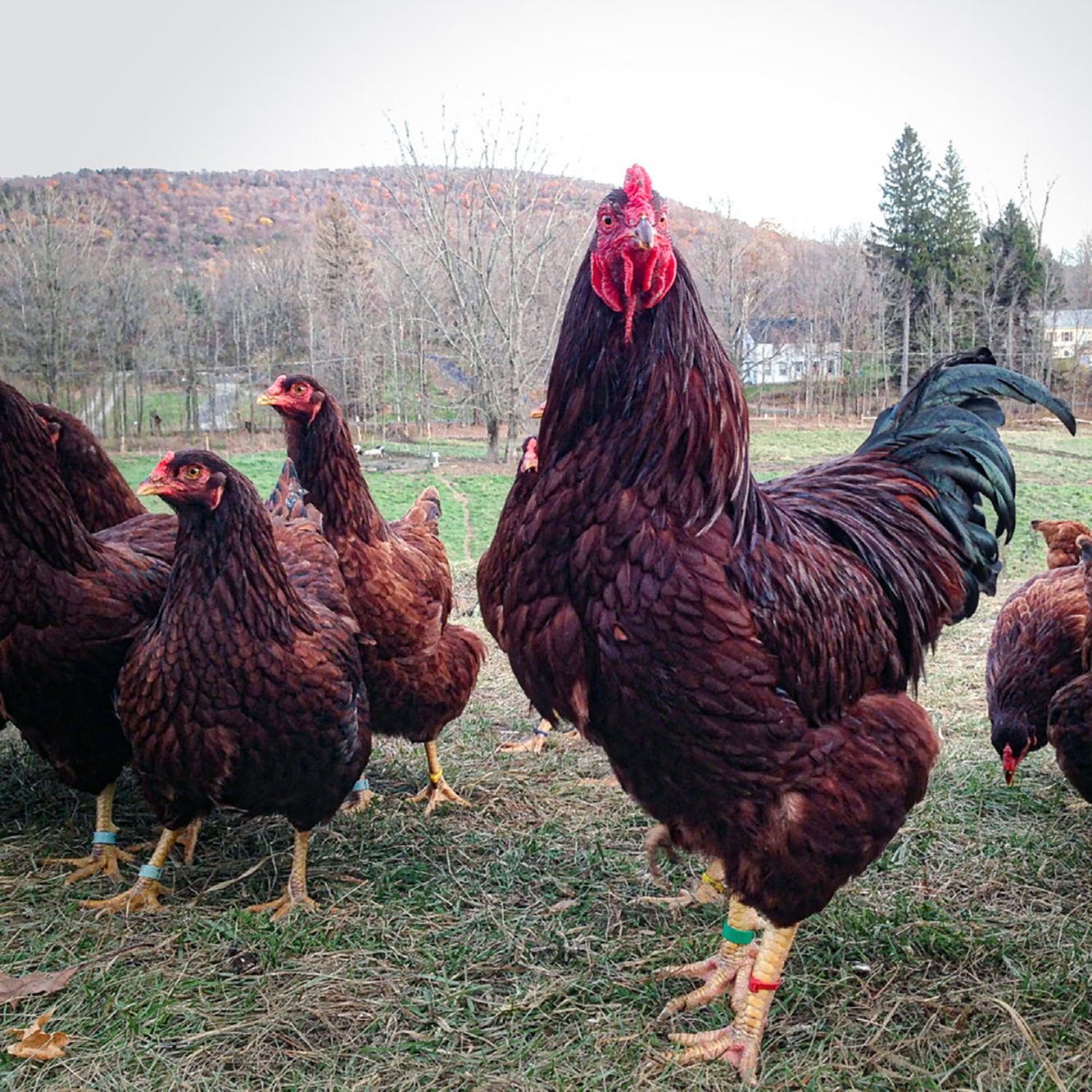
Brown Leghorn
7. Brown Leghorn, approximate weight, six pounds. Processing time, 16 to 21 weeks. The Brown Leghorn is simply a variant of the White Leghorn, one of the premier egg-laying chickens you may have heard about. This breed can lay up to two hundred and eighty per, but it also makes a decent meat bird bred specifically for driving in hot climates.
The Brown Leghorn likes to forage and really exhibits aggressive behavior. While it won’t grow to massive sizes, its ability to produce both meat and eggs and to survive harsh conditions makes it a great choice for backyard meat bird flock.
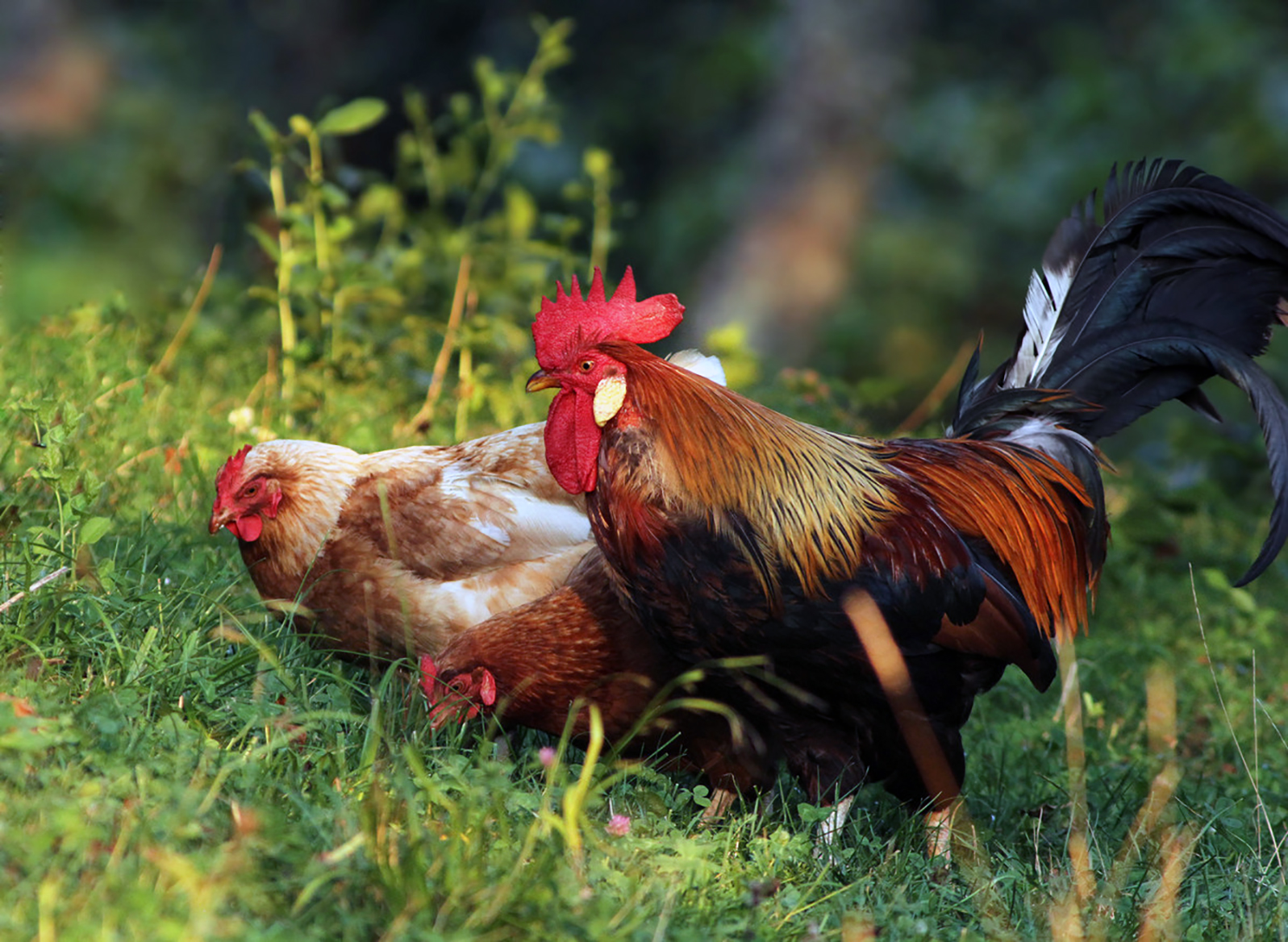
Egyptian Fayoumi Chicken
8. Egyptian Fayemi approximate, five Elbaz processing time, 14 to 18 weeks, if you are looking for a more exotic breed of meat chicken. Consider raising the Egyptian Fuyumi.
This dual purpose chicken lays about 150 exposure and is also a rapidly growing meat bird while it is on the smaller side of things, with roosters reaching only about five pounds.
These birds mature quickly when it comes to laying. You’ll probably have eggs by the time your chickens are ready for slaughter. Both the eggs and meat of the silver-colored bird are delicious, but they can be a bit flighty.
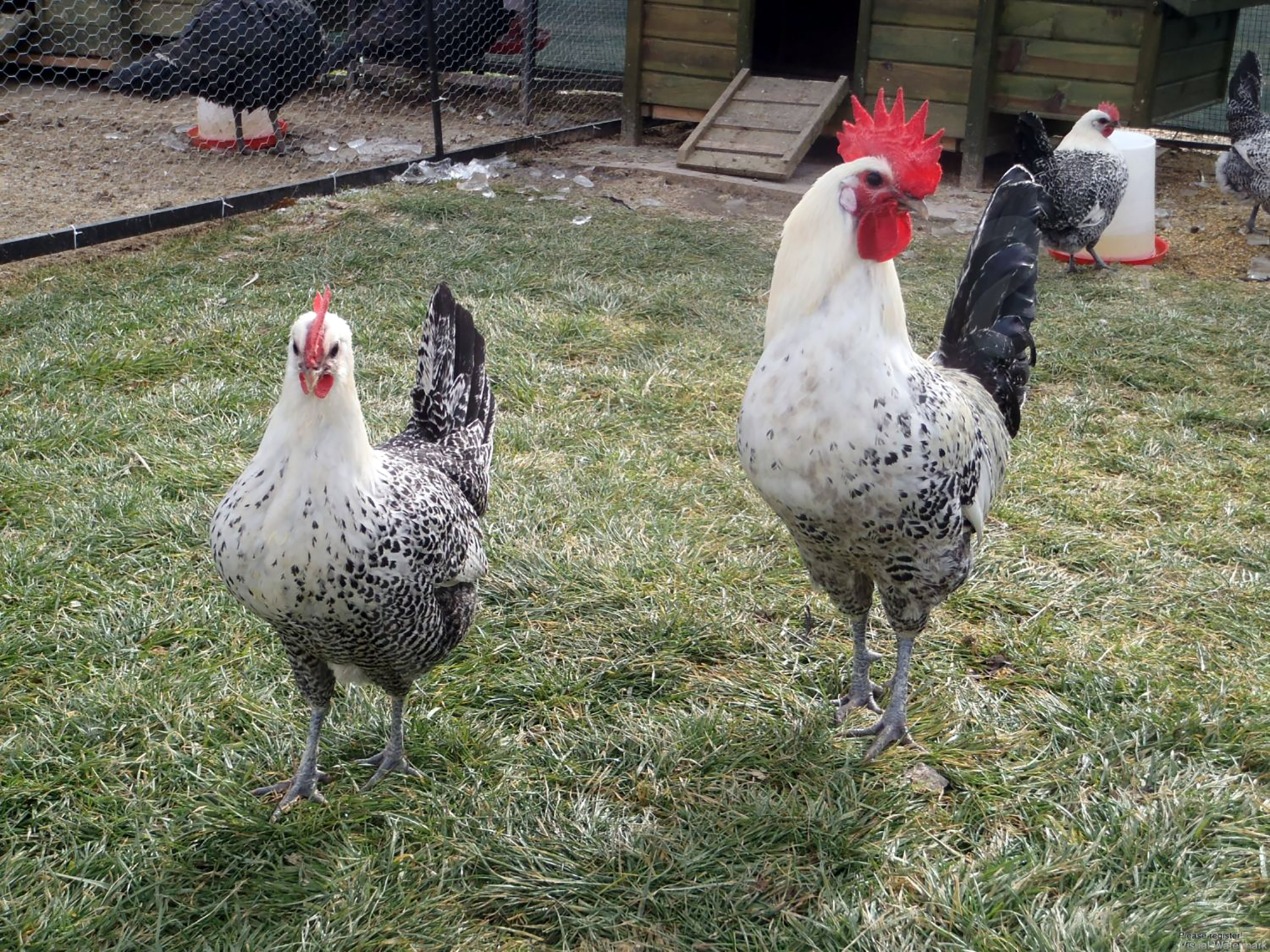
Active foragers. Egyptian pheromones are really aggressive and are also resistant to most diseases.
Turken
9. Turken – Approximate weight, six to nine pounds. Processing time, 10 to 15 weeks. We won’t sugarcoat things here. The token is definitely not the most attractive chicken you can raise. A common misconception is that tokens are half chicken and half turkey.
While this is not the case. It is true that turkeys look like the result of a failed experiment in breeding the two species. These birds are also known as naked next. So, as you might suspect, these birds have no feathers around their necks.

They are great backyard chickens and can be found in several colors, including blue, white, black, grey, and above. This greed does well in both cold and hot climates.
You can keep them no matter where you lie, as they are extremely adaptable to any changes since they are so stress resistant, they put on weight quickly, as actively as you can expect, about 100 xperia from these birds if you want to hatch your own eggs. It’s also important to note that these birds are great mothers.
Chantecler
10. Chanticler, approximate weight, nine pounds. Processing time, 11 to 16 weeks, the Chanticleer breed is another meat chicken that does well in cold climates, a fantastic dual purpose. But this chicken lays eggs earliest and also matures to slaughtering age quite rapidly.
These birds are suitable for free-ranging, preferring to forage. In addition to consuming a high protein feed supplement.
Chanticleer Ticklers can lay up to two hundred Xperia because they are a pure breed, they are less expensive to raise in the long run.

You can easily breed multiple generations of this breed without seeing a loss in production or heritage.
Delaware
11. Delaware – Approximate weight, eight-point five pounds. Processing time, 12 weeks, Deleware chickens are bulky, dual purpose chicken breeds raised specifically for producing a respectable amount of meat while also leading up to two hundred and eighty Zetia.
This cross-breed was developed from the Plymouth Rock and the New Hampshire Red, largely to preserve the egg-laying ability and improve the meat quality of the two individual breeds. This breed grows relatively quickly, reaching nearly nine pounds in just 12 weeks.
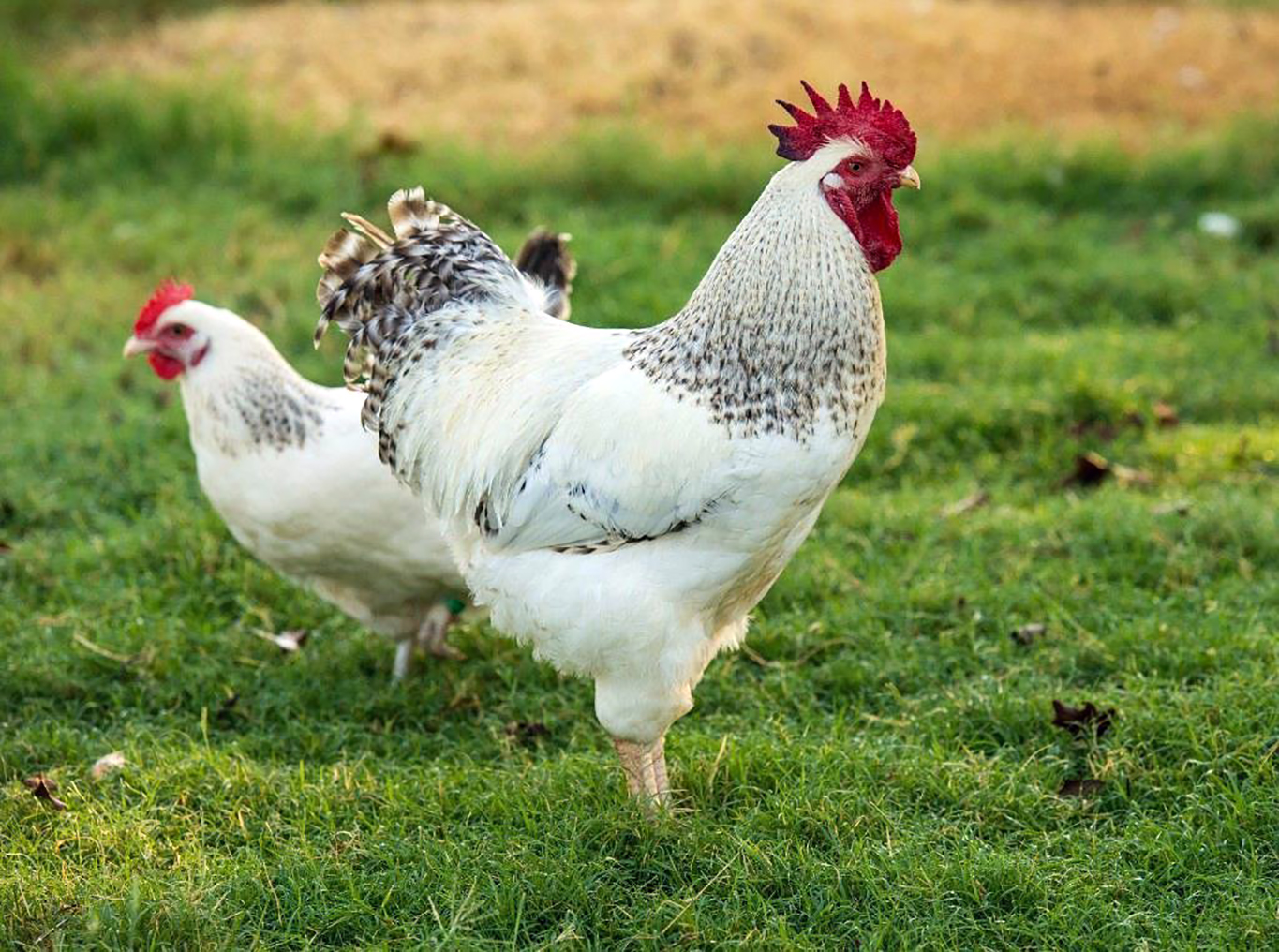
Croad Langshan
12. Croad Langshan, approximate weight, nine pounds. Processing time, 14 to 18 weeks. This unique, somewhat bizarre-looking bird has soft black feathers and a bizarre green lining.
This chicken originated in China and has feathered legs while it can lay up to 150 exposure. It is just as commonly referred for its meat production abilities. This chicken can be found in several colors, including blue and black. Males grow up to nine pounds, while females are slightly smaller.
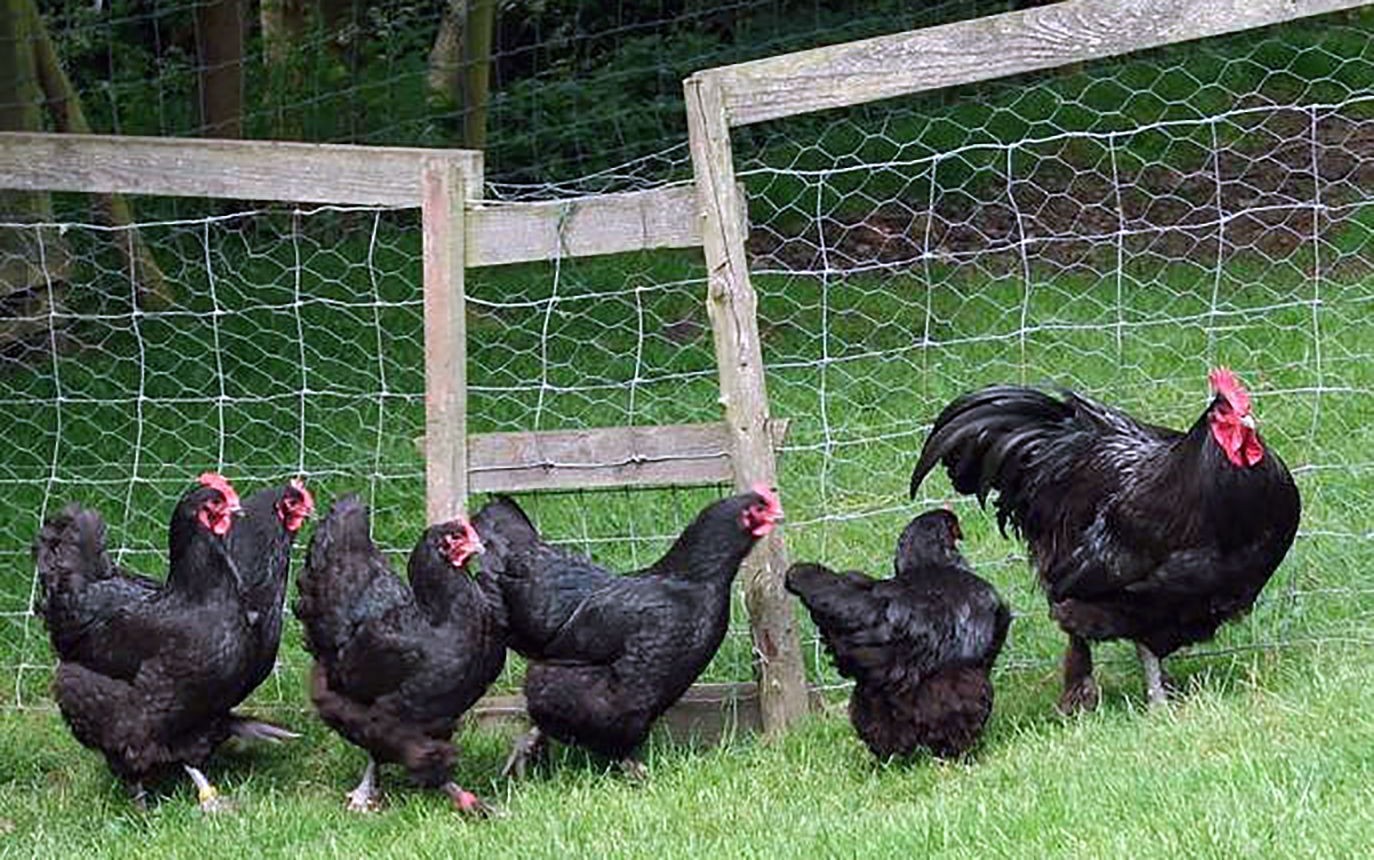
These birds grow quickly and are one of the most intelligent and quiet chicken breeds you can raise.
Dorking
13. Dorking, approximate weight, nine pounds. Processing time, 16 weeks, dorking chickens are named after the English town of Dorking and we’re best known for their tender, fine, textured white meat.
These birds are also frequently raised for producing up to 140 large white eggs each year. They are common adapt easily to most settings, preferring to forage to find their food.
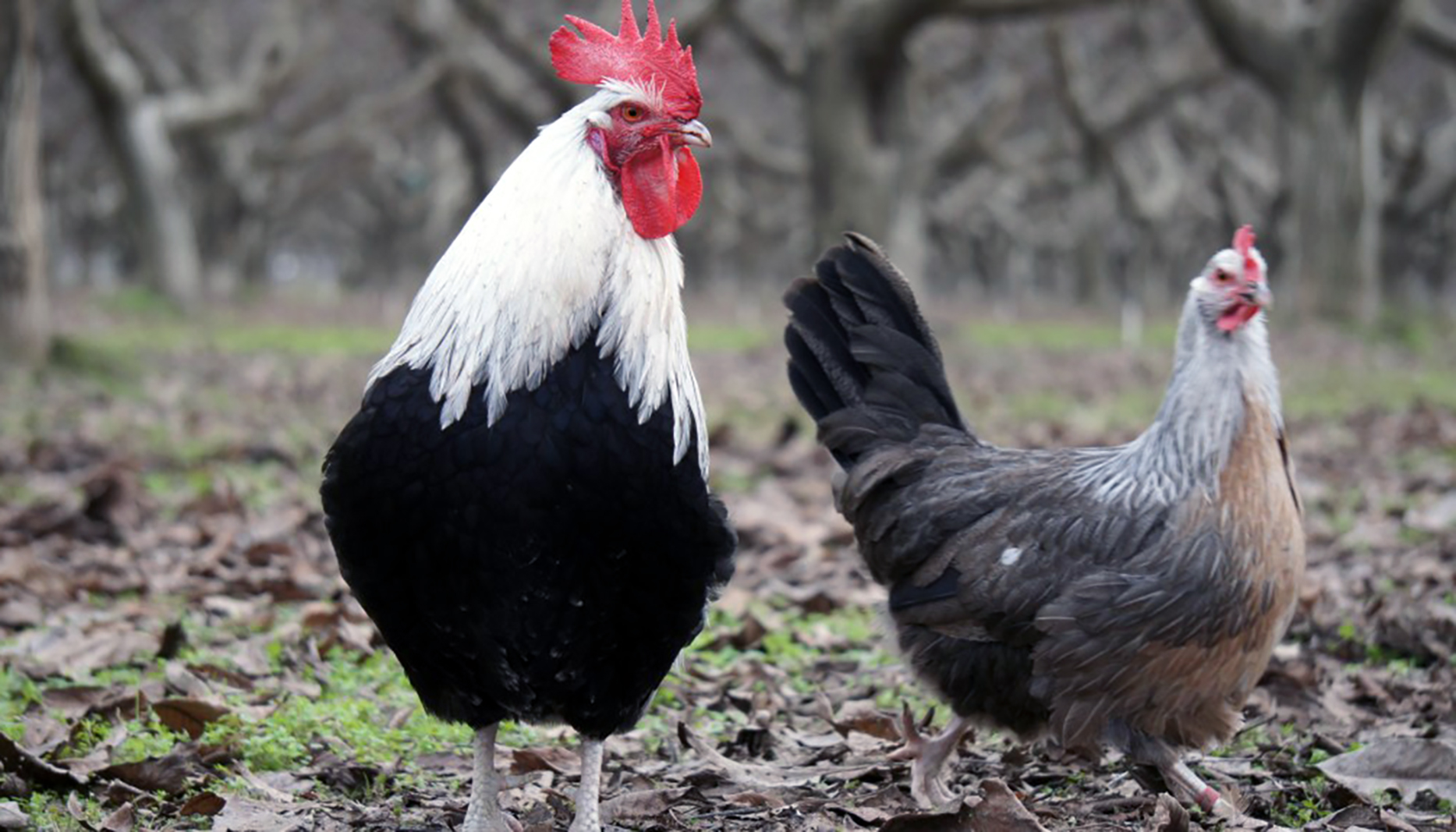
These chickens are not aggressive, but they should not be kept with aggressive chickens as they aren’t great at defending themselves because they can be prone to frostbite.
They aren’t the best chicken breed to raise in northern climates, hence can be slow to mature and usually don’t start laying until 26 weeks of age.
Kosher King
14. Kosher King approximate weight, five pounds, processing time 12 weeks. Kosher kings are decent meat chickens with a gorgeous appearance. These birds have black and white striped plumage and are similar in appearance to the popular Bodrog.
Roosters of this breed tend to grow much more quickly than the females, but the females are decent layers. If you keep them to maturity originating from heritage breeds, these birds can be a bit more difficult to find at hatcheries. But they mature more quickly than most heritage breeds.
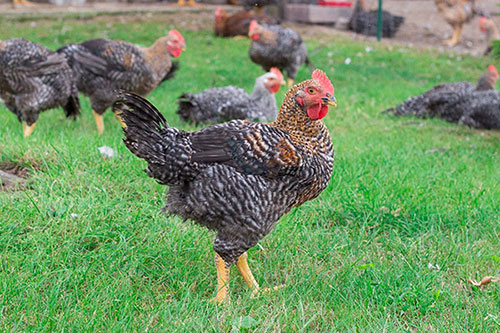
New Hampshire red
15. New Hampshire red, approximate weight, eight-point five pounds. Processing time, eight to 10 weeks, a classic American dual-purpose breed, the New Hampshire Red is yet another chicken that produces prolific quantities of eggs as well as tasty meat.
As bird matures relatively quickly and is often used as a broiler species, there are both standard and bantam varieties of New Hampshire chickens, with both producing exceptional products for backyard chicken farmers.
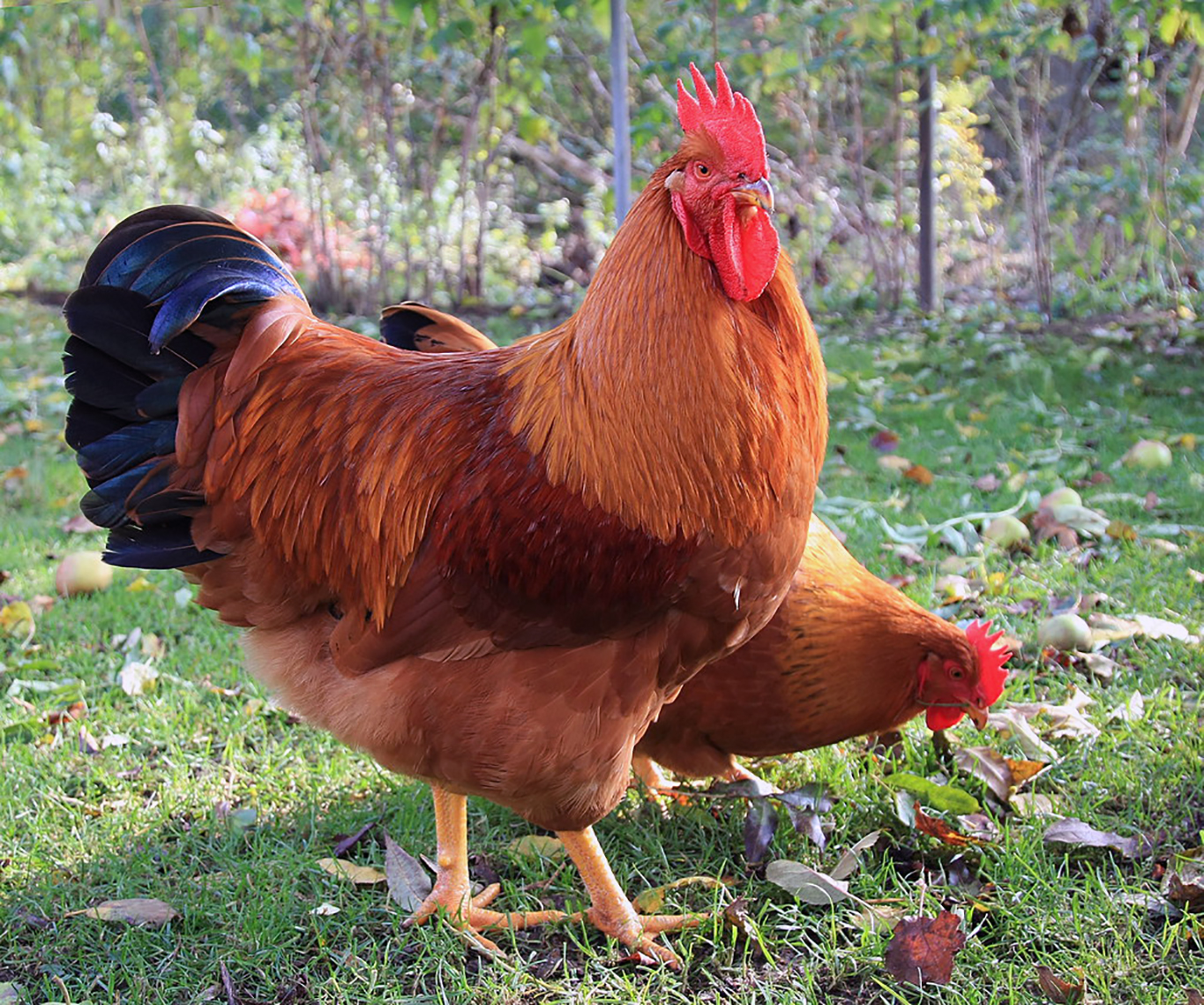
These chickens tolerate challenging weather conditions and are known to be both broody and quiet, while males can be a bit aggressive. The adaptability and productivity of this chicken breed can’t be overlooked.
What To Consider When Selecting a Meat Chicken
Selecting a meat hen boils down to your own preferences. Because, when all is said and done, you can consume any type of sort of chicken (or bird for that matter). Some just often tend to have a bigger body and also will certainly supply more meat than others.
If you’re seeking that picture-perfect hen, the one you have actually possibly seen in the grocery store or on TV, then your best option is the Cornish Cross.
But if you’re interested in discovering various other types of the hen that are commonly raised for meat, after that you’ll intend to take consider complying with factors to consider to make your selection. If you are not sure when to refine your hens, review our full overview here.
Size of the Bird
It’s not a surprise that the larger the chicken (generally) the a lot more meat on the dinner table. While the Cornish Cross is the standard for big meat poultries, there are many heritage and dual-purpose breeds that have plenty heft to “bring to the table” as well. If you’re searching for a great meat to bone proportion, choose the basic griddles rather than heritage, yet if you’re alright with a little less meat but just as tasty meal, a heritage breed could be perfect.
Fast-growing chickens
Some chicken owners aren’t comfy with raising types that were created for commercial handling. That is because these poultries were created to grow extremely fast to stay on par with supply as well as need … and also make more cash.
What’s wrong with fast-growing hens, you ask?
Regrettably, these hens can have a slew of medical troubles as a result of unnaturally rapid growth rates. In fact, some poultries expand so fast, and also extraordinarily huge, that their legs can not support their bodies.
They might likewise eat way too much and also have heart and also respiratory system troubles which can result in fatality before they reach refining weight. Given that you’re probably not in the business of increasing meat chickens (yet) you’re most likely ok with a slower expanding bird as well.
Other Desirable Qualities
Various other things to think about are attributes like free-range capacity, egg-laying frequency, as well as also ornamental skills. Are these attributes important to you? If so, I’ve obtained a couple of intriguing breeds for you to consider below. Each of the complying with groups has something to supply, as well as there’s actually no incorrect option here. So enjoy as well as continue reading to discover a lot more about your meat chicken options.
Raising Meat Birds from Day Old Chicks
There aren’t too many differences associated with elevating meat birds as day-old chicks versus elevating egg layers at this stage.
You will likely purchase your chicks from a hatchery or feed shop.
Buying chicks is much easier when you are increasing meat birds, as you don’t require to fret about whether you’ve gotten young hens or roosters.
Due to the fact that you will certainly butcher most breeds of meat birds prior to they get to sex-related maturation, the sex of your chickens is not an element.
As a result, you can commonly buy meat chicks at a much-reduced price than you can buy egg layers– they do not need to be sexed before they are delivered to you.
Coop for Meat Birds
The coop for your meat birds will be virtually identical to the one you might already have for your laying hens if you already increase hens.
However, what you need to bear in mind is that you will possibly be raising a greater volume of meat hens than egg layers, so your coop size will certainly need to raise dramatically.
Sometimes, you could discover that you require to increase 50, 100, or perhaps 200 chickens in a period to fulfill the needs of your family members.
Among the advantages of increasing meat poultries, nonetheless, is that you do not need to keep these birds for an entire year– actually, most of the times, this is inhibited.
Therefore, you don’t require a shielded coop with protection from cold weather. You just need a short-term sanctuary.
Many people build hoop houses, tarp sanctuaries, or chicken tractors.
You do not need roosts, and also you additionally do not require nesting boxes, making a meat bird coop a much easier building to design, maintain, and action.
How to Fatten Your Meat Chickens
Many individuals believe- incorrectly that elevating meat poultries on the field will cause the meat to be stringy, hard, as well as not fit to eat.
This is far from the truth.
While you can easily keep meat hens in arrest or even in a cage with a tiny run connected, meat birds increased on field will certainly be happier and also healthier.
Researches have shown that birds raised on pasture generate meat that hurts as well as likewise greater in omega-3s as well as various other nutrients
To make sure the meat of your poultries has an ideal fat to meat ratio, you need to supply them with regular feed and also room to roam.
Several chicken farmers support for the 12/12 feeding schedule, in which you provide your birds with open door to food for 12 hours a day, and afterwards pull it out during the various other 12 hours.
While this produces an optimum proportion of meat to fat, it can be tough to keep as well as monitor.
Offering your poultries room to forage will enable them to eat enough to become plump yet not a lot that the tender meat turns to lumps of fat.
Offer your hens a lot of water, as well. Preferably, this ought to be on the other side of the pen or cage from the food so that they are forced to exercise.
When Are Meat Birds Ready to Eat?
Make certain you keep in mind of the full weight capacity and suitable day of handling for your particular breed of meat chicken, as this will certainly vary.
While some meat birds are ready to butcher in simply six weeks, others take a bit longer to mature.
Other types may grow incrementally past a particular date, but the feed conversion price will certainly be so inadequate that it makes even more sense to butcher them at a slightly smaller sized size.
You can refine poultries in a number of means. You can do this on ranch or you can bring the birds to an abattoir.
Most people pick to butcher their very own poultries, as the fees related to butchering poultries offsite have a tendency to be fairly high.
Remember, however, that if you plan to sell your meat hens, you will certainly require to have them butchered at a USDA-inspected facility.
Read More from prestigequeen.com :
- Beginner’s Guide to Raising Backyard Chickens
- Best Chicken Egg Incubator
- The best chicken BROODER box
Hope you like this site, share this page with old friends. Have a good day.
Contents
